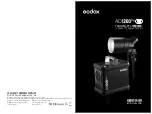
22
PHLG 2000 C2
GB
Using nozzles
WARNING!
►
Before changing the nozzle, you must ensure
that the nozzle has cooled to avoid burns.
►
Excessive heat can ignite paints and plastics.
CAUTION!
►
Do not inhale any vapours.
Spatula nozzle – removing paints or varnish:
♦
Attach the spatula nozzle to the outlet .
♦
The spatula shape of the nozzle is designed for
targeted hot air delivery. Use it together with a
separate spatula to remove paint and coatings.
Flat nozzle – separating glued joints,
softening paints:
♦
Attach the flat nozzle to the outlet .
♦
Avoid prolonged exposure to heat as burnt paint
can be very difficult to remove. Many adhesives
can be softened with heat. The glued joints can
be separated and excess glue removed.
Reducer nozzle – welding plastics:
♦
Attach the reducer nozzle to the outlet .
♦
Use the reducer nozzle with heat-shrinkable
tubing and films.
Additional usage examples for
house, car and garden
Defrosting water pipes:
Note!
Do not use on PVC piping.
Note!
Water
and gas pipes are often indistinguishable from the
outside. If in doubt, always ask a professional.
Note!
Copper pipes are soldered and may not be
heated to above 200°C.
Releasing screwed joint:
♦
Heat screwed joints carefully with hot air and
the screws can then usually be removed easily.
Removing weeds:
■
The hot air can be used to dry out weeds and
seedlings.
Lighting charcoal:
WARNING!
►
Do not use any lighter fluid.
♦
Attach the barbecue nozzle to the outlet .
♦
Ignite charcoal in just a few minutes.
De-waxing:
♦
Use the product, with suitable caution, to re-
move residual wax from skis/snowboards or
candle holders.
Cleaning
WARNING! RISK OF INJURY! Always
pull the plug out of the socket and let
the appliance cool down before you
carry out any work on the appliance.
■
Keep the air inlet and the outlet clean.
■
Use a cloth to clean the housing. Never use
petrol, solvents or cleaning agents that can
damage plastic.
Summary of Contents for 273458
Page 3: ...A ...




































